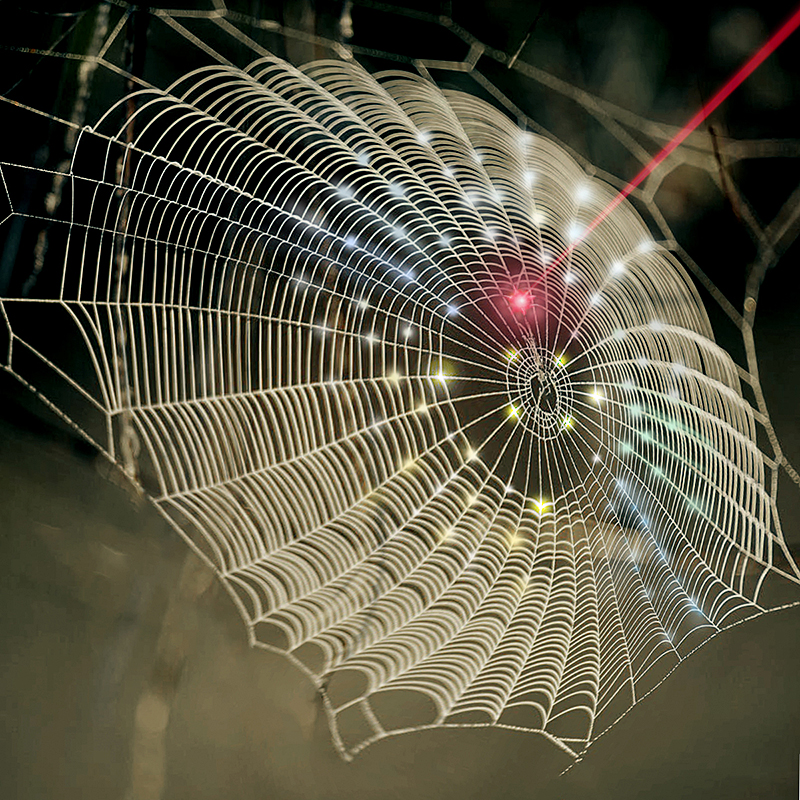Purdue University’s intuition exploits nature to produce more resistant 3d photodetectors for biomedical or military use
New technologies are often inspired by nature. An example is the robotic arm inspired by octopuses. Now it is the turn of spiders and their webs. The architectures and shapes created by spiders are fascinating and complex and can form nets with high mechanical resistance. Researchers at Purdue University have decided to use these designs to perfect the technology of optical detectors. The shape is combined with the mechanical properties of graphene to achieve great mechanical adaptability and damage tolerance.
“We employed the unique fractal design of a spider web for the development of deformable and reliable electronics that can seamlessly interface with any 3D curvilinear surface” said Chi Hwan Lee, a Purdue assistant professor of biomedical engineering and mechanical engineering. “For example, we demonstrated a hemispherical, or dome-shaped, photodetector array that can detect both direction and intensity of incident light at the same time, like the vision system of arthropods such as insects and crustaceans“.
The research was supported by the National Science Foundation and the Air Force Research Laboratory, the results published in the journal Advanced Materials. The facility provides unique capabilities for externally induced stress distribution on the sensor. The particular shape is also able to withstand small cuts while maintaining overall strength and function. “The assembly technique presented in this work enables deploying 2D deformable electronics in 3D architectures, which may foreshadow new opportunities to better advance the field of 3D electronic and optoelectronic devices“, Lee said.
